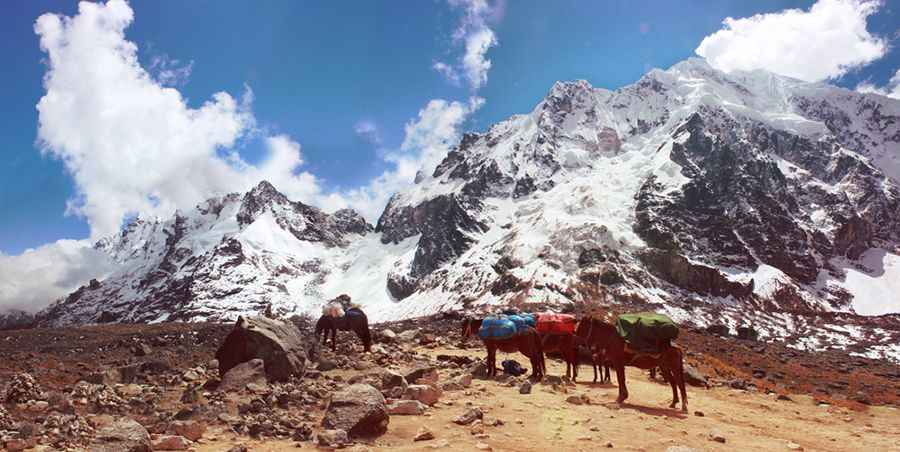The Oldest Roads: The Inca Trails
They are among the oldest roads in the world and, considering the times in which they were built, they were very sophisticated: The Inca Trails. An extensive road network of about 25,000 miles.

There were two main roads. The first main road ran from Cuzco to Quito through the Andes at an altitude of about 9,800 to 14,100 feet. This road was about 3,250 miles long. The second main road was a parallel road along the coast with a length of about 2,500 miles. Its extension led to southern Colombia. These two roads were connected by numerous cross roads in east-west direction.
The roads were between 1 m and 16 m wide. Sometimes they were simply well-trodden paths, but more often they were properly constructed roads. As far as possible, these roads were laid out in a straight line and also overcame considerable slopes. The larger inclines were overcome with steps. Tunnels were bored through the mountains. Smaller streams were crossed with logs or boulders, while suspension bridges led over larger rivers. Many of the roads date back to pre-Incan times.
Along the roads, tambos served as shelters and storage rooms. Only couriers, called chasqui (the runners), porters for the nobles, long caravans of merchants, and the army were allowed to use these roads. The system of the chasqui was organized militarily. They waited in small huts or shelters made of branches, each 3 km apart, for the message delivered by another runner. This system was efficient. It is reported that a message made it from Quito to Cuzco in five days. These two cities are about 2,000 km apart. Horses and mules were unknown throughout the Americas before the arrival of the Europeans, and thus could not serve as pack animals. The Incas used the llama for transporting goods. Since there were no large draft animals, wagons and similar means of transportation were also unknown. Contrary to rumors, they knew the wheel but had no use for it.
Hike Your Own Inca Trail
The Inca Trail is not very suitable for driving. However, many parts of the ancient network can be hiked. You can hike the traditional Inca Trail ending in Machu Picchu or choose the Salkantay Trail. The hike is challenging but manageable for those with reasonable fitness. The Salkantay trek from Mollepata is a less traveled alternative to the Inca Trail. The trail leads over the almost 15,000 feet high El Paso pass down into the warm cloud forest regions, with the snow-capped Nevado Salkantay always in view. On the often stony, winding Inca paths through Peru's Andean high mountains, couriers and warriors of the ancient tribe were already on the move.
The Salkantay trek is not subject to access restrictions like Machu Picchu and does not require permits months in advance. The trail passes over varied terrain to Aguas Calientes, a small mountain village at the foot of Machu Picchu. The warm and humid climate makes this area unique. Instead of just rugged mountain massifs, numerous bromeliads, orchids, and giant ferns line the trail next to ruins and in cracks of walls—a habitat for butterflies, hummingbirds, and parrots.
Cusco was conquered and looted by the Spanish in 1533. In 1535, Manco Cápac II marched against the Inca capital, destroying Cusco. As a consequence, the current capital Lima was founded on the coast and Cusco lost its importance. Only when the hidden city of Machu Picchu was discovered in 1911 did Cusco regain its importance and become the largest tourist center in Peru. In 1950, Cusco suffered another downfall when an earthquake destroyed almost 90% of the houses and churches that had been rebuilt. In 1983, the restored center with its colonial buildings was designated a World Heritage Site by UNESCO. Combining a visit to Cusco with hiking the Salkantay Trail offers a unique experience.